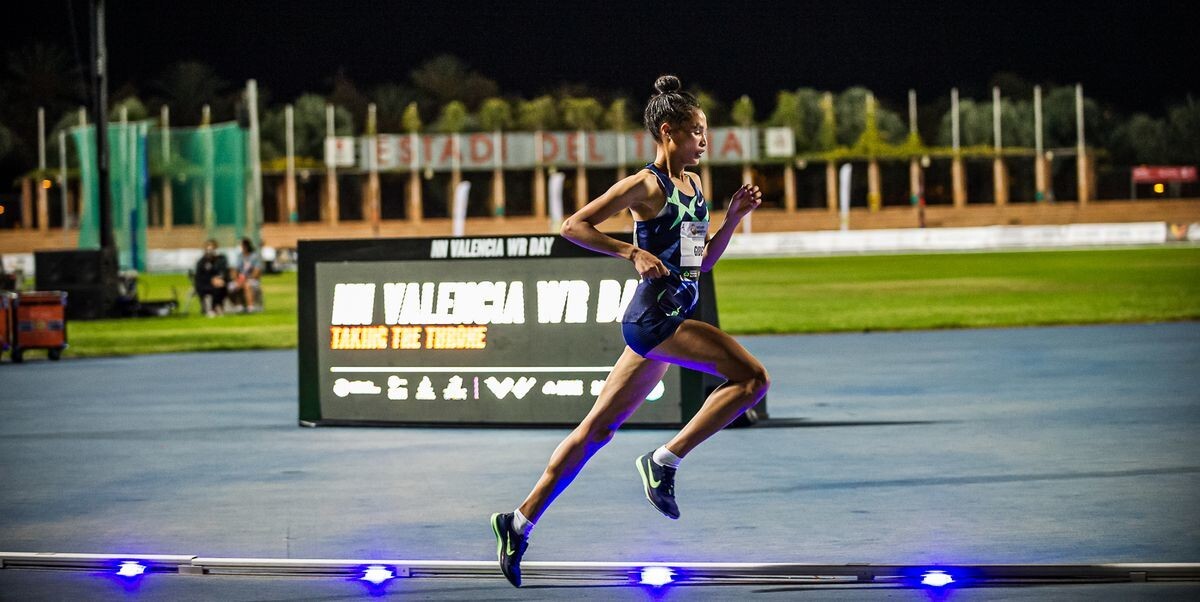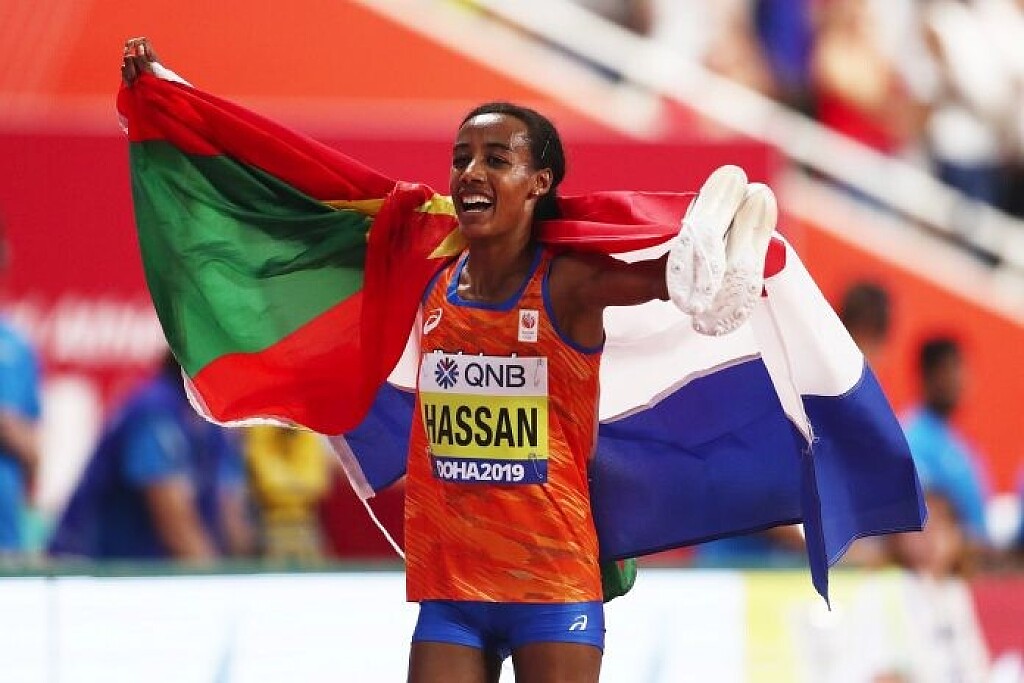Running News Daily
Running News Daily is edited by Bob Anderson. Send your news items to bob@mybestruns.com Advertising opportunities available. Train the Kenyan Way at KATA Kenya and Portugal owned and operated by Bob Anderson. Be sure to catch our movie A Long Run the movie KATA Running Camps and KATA Potato Farms - 31 now open in Kenya! https://kata.ke/
Index to Daily Posts · Sign Up For Updates · Run The World Feed
How Conservative Pacing Can also Be Aggressive Pacing
Matt Fitzgerald is an acclaimed endurance sports coach, nutritionist, and author. His many books include On Pace, The Endurance Diet, 80/20 Running, and How Bad Do You Want It?
On June 6, 2021, Sifan Hassan of The Netherlands smashed the women’s 10,000-meter world record in the Dutch town of Hengelo, besting Ethiopian Almaz Ayana’s mark of 29:17.45 by more than 10 seconds. Two days later, the Ethiopian Olympic Trials Women’s 10,000m was held on the same track. Nobody expected the record to go down again, least of all because the fastest runner in the race, Letesenbet Gidey, had a PB of 30:21—a full 75 seconds slower than Hassan’s time. Nevertheless, those fancy blue Wavelight LED’s that show world-record pace were activated, just in case.
Gidey started fast, but not that fast, reaching 2000 meters in 5:54, about 5 seconds behind the lights. Her next kilometer was a mite quicker, though still slower than record tempo, leaving her another second off the mark after 7.5 laps. She held that pace through the halfway mark, hitting 5000 meters in 14:42, on pace to finish in 29:24, a virtual straightway behind the specter of Hassan. But she looked really good—about as relaxed and comfortable as she had during her earlier warm-up jog.

Gidey’s next two kilometers were her swiftest yet—each completed in 2:55—yet even this pace was fractionally slower than Hassan’s standard, leaving her fully 10 seconds behind the lights at 7K. That’s when Gidey began to accelerate, running each remaining lap faster than the one before. She covered the final 1600 meters in an astonishing 4:26, the bell lap in a brain-melting 63 seconds, and finished with a new world record of 29:01.03. Her time for the second half of the race—14:18—was the eighth fastest women’s 5000-meter time ever run!
What do we make of this performance? For me, it teaches an important lesson about pacing. Specifically, it shows that a conservative pacing strategy can also be an aggressive pacing strategy in the sense that running the first part of a race at a relatively slow pace can position an athlete to achieve a breakthrough performance for the full race distance. The reason has to do with the psychological nature of pacing and human performance limits.

You see, in sprint races, performance is directly limited by physiology (specifically, leg turnover and force application). But in middle- and long-distance running events, performance is merely constrained by physiology and is directly limited by psychology. In a properly-paced middle- or long-distance race, the runner does not encounter any kind of hard physiological limit until they are within about 30 seconds of finishing, as it is humanly impossible to sustain a maximal effort longer than half a minute, give or take. Prior to that time, the runner is deliberately running slower than she could, aiming for the fastest pace she can sustain without hitting her bodily limit before she’s within 30 seconds of crossing the finish line.
This calculated parceling of effort is done mainly by feel. Hence, a degree of uncertainty is involved in pacing. How can a runner be certain she’s riding the line, on track to complete the race in the exact least time possible for her on that day? She can’t. However, uncertainty does tend to decrease as the race unfolds. The closer the runner gets to finishing, the more confident she becomes in her pacing judgments. Shorter races are easier to pace than longer ones, after all, and longer races effectively become shorter ones as runners move through them.
Pacing is really all about belief. When a runner is certain her current effort is sustainable for the remaining distance of a race, she’s usually right, and when she’s certain it’s not, she’s also right, not for some hippie-dippy mystical reason but because such beliefs have a solid basis in perceived effort, conscious knowledge of the situation, and past experience. But because belief is not strictly tied to physiology, runners can manipulate belief independent of physiology in ways that enable them to race faster, and that’s exactly what Letesenbet Gidey did in her record-breaking 10,000 meters.
In particular, Gidey ran the first 7K of the race at a pace that was slow enough to leave her feeling relatively good but not so slow as to put the world record out of reach. At that point, confident she could speed up, she did, but only a little, such that, after completing another lap, Gidey felt confident she could speed up a little more, which she did, and so on. The materialists in the room are rolling their eyes at this, but is my theory really so far-fetched? We have all kinds of experimental evidence that purely psychological factors affect pacing and performance. Endurance athletes are known to race faster when they are in a group, when they have a higher level of motivation before the race, and when they set a goal they believe is achievable, but just barely. The Gidey method of pacing is just one more way of improving performance through psychological self-manipulation.
I’m not suggesting that the Gidey method is the optimal pacing strategy for every runner in every race, though I push back hard against the claim that Gidey achieved what she did despite her pacing, not because of it. Folks, she covered 10,000 meters 5 seconds faster than any woman in the history of the world! How could that possibly have come about as a result of screwing up? I humbly ask you to consider experimenting with an aggressively conservative pacing strategy in an upcoming race. Here’s an example of a Gidey-style pacing plan for a runner hoping to squeak under 40:00 in a flat road 10K:
1K – 4:062K – 4:05 (8:11)3K – 4:05 (12:16)4K – 4:04 (16:20)5K – 4:02 (20:22)6K – 3:59 (24:21)7K – 3:58 (28:19)8K – 3:56 (32:15)9K – 3:54 (36:09)10K – 3:50 (39:59)
One of three things will happen if you try this experiment: 1) You will mess it up and decide either to try again or not to, 2) you will execute the plan well but decide you could have gone faster with a more traditional pacing strategy, or 3) you will execute the plan well and achieve a breakthrough performance you’re so proud of, you name your next pet Letesenbet. One thing that I can guarantee will NOT happen if you try this experiment is that you spontaneously combust and never run again. So, try it!
by Matt Fitzgerald
Login to leave a comment




